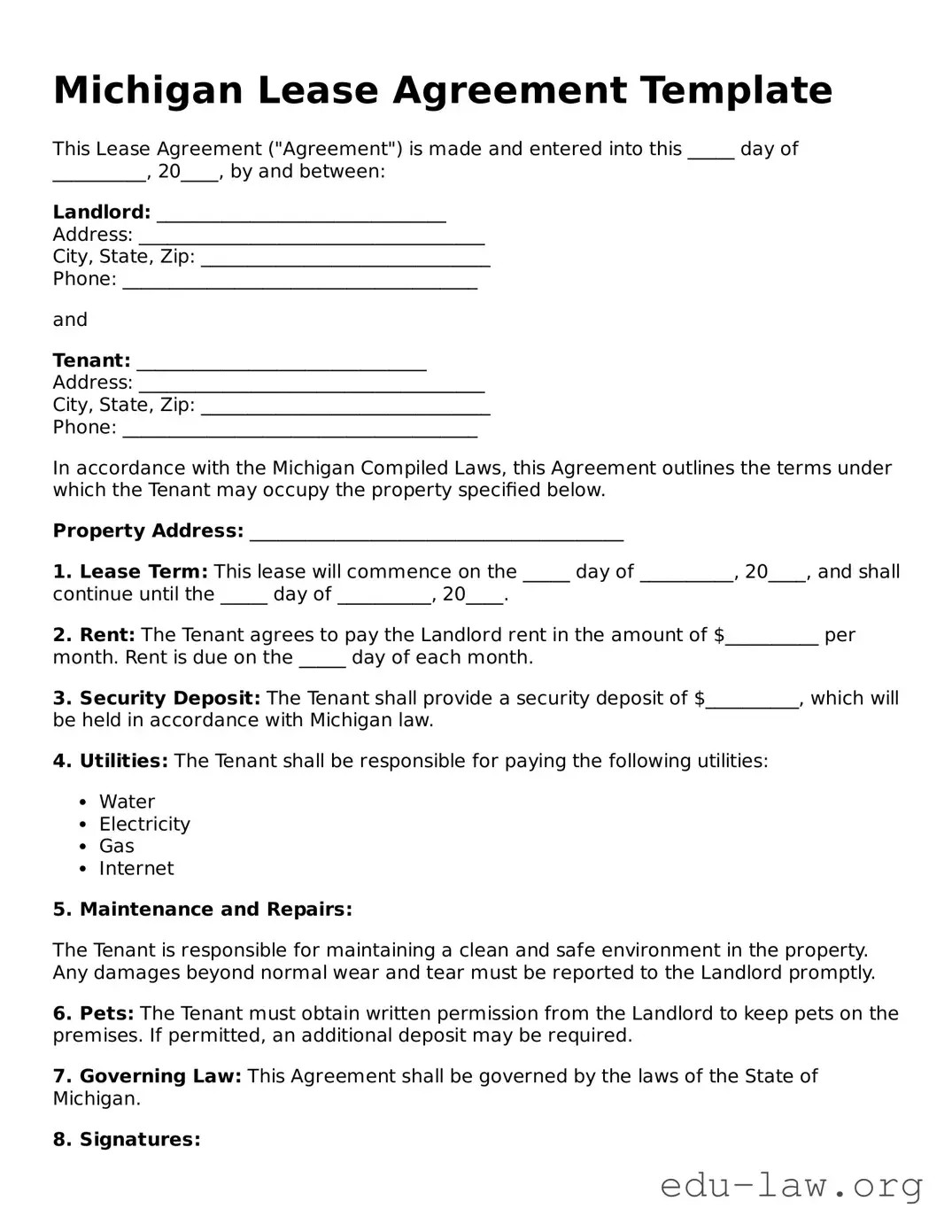Michigan Lease Agreement Template
This Lease Agreement ("Agreement") is made and entered into this _____ day of __________, 20____, by and between:
Landlord: _______________________________
Address: _____________________________________
City, State, Zip: _______________________________
Phone: ______________________________________
and
Tenant: _______________________________
Address: _____________________________________
City, State, Zip: _______________________________
Phone: ______________________________________
In accordance with the Michigan Compiled Laws, this Agreement outlines the terms under which the Tenant may occupy the property specified below.
Property Address: ________________________________________
1. Lease Term: This lease will commence on the _____ day of __________, 20____, and shall continue until the _____ day of __________, 20____.
2. Rent: The Tenant agrees to pay the Landlord rent in the amount of $__________ per month. Rent is due on the _____ day of each month.
3. Security Deposit: The Tenant shall provide a security deposit of $__________, which will be held in accordance with Michigan law.
4. Utilities: The Tenant shall be responsible for paying the following utilities:
- Water
- Electricity
- Gas
- Internet
5. Maintenance and Repairs:
The Tenant is responsible for maintaining a clean and safe environment in the property. Any damages beyond normal wear and tear must be reported to the Landlord promptly.
6. Pets: The Tenant must obtain written permission from the Landlord to keep pets on the premises. If permitted, an additional deposit may be required.
7. Governing Law: This Agreement shall be governed by the laws of the State of Michigan.
8. Signatures:
By signing below, both parties agree to the terms and conditions outlined in this Lease Agreement.
Landlord Signature: ___________________________ Date: ______________
Tenant Signature: ___________________________ Date: ______________
